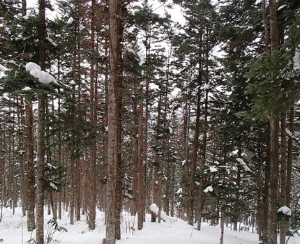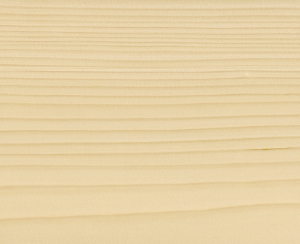Todomatsu
Abies SachalinensisSoftwood
Family: Pinaceae
Although Todomatsu has "Pine" in its name, it is not a Pinus genus but a fellow of Fir and is the same family of Firima (A. frima) or Shirabe (A. veitchii) seen in Honshu. The distribution of Todomatsu is limited to Hokkaidoincluding the Minami Chishima and Karafuto Islands. Todomatsu is collectively called Ezo Todo, together with Ezomatsu which are the representative tree species of Hokkaido.


FEATURES
There is not much difference in color between the heartwood and the sapwood, being almost white altogether. Its cutting surface is light and gentle. The wood is relatively light and soft in whitish color. Because of that, the thermal conductivity will be low, so you can feel a little warmth when you touch it. The transition from early wood to late wood is so quick that the annual rings are clear. Specific gravity in air-dry ranges from 0.35 to 0.52 (0.44 in average) as it is slightly lightweight. The material is easy to split, cut and dry.
USAGE
In Japan, it has been widely used as a building material in Hokkaido for a long time, siding boards, ceiling boards, floorings and sheathing boards as well as structural member such as columns and beams. It is preferred and used in Hokkaido just like Sugi in Honshu, Shikoku, and Kyushu. It is also used for pulping materials, packaging materials, disposable chopsticks, cutting boards and so on. It is also used as public work materials because it is relatively resistant to decay. It is sometimes planted around a house as a windbreak, which creates a unique landscape in Hokkaido.
Charactristic Table
| Specific gravity in air-dry |
Mean comefficient shrinkage for 1% change of moisture content(%) |
Surength(Mpa) | Modulus of elastcity in bending(GPa) |
|||
|---|---|---|---|---|---|---|
| Radial direction | Tangential direction | Bending surenght | Longitudinal compressive Surenght |
Shear strength parallel to grain |
||
| 0.40 | 0.14 | 0.35 | 64 | 32 | 6.4 | 7.8 |


